#like. the most realistic place to run is to the North Shroud
Text
friend and I were discussing it and it's so fucked how the ishgardians literally have nowhere to go even if they wanted to run
#saint.txt#ishgardposting#spoilers#major spoilers#long post#by this I mean deserters who want to start over elsewhere and not join the heretics#like. the most realistic place to run is to the North Shroud#which necessitates passing through Camp Dragonhead and the Observatory#both of which are on watch for Ishgardian fugitives trying to escape to Gridania and even if you make it past both of those without#being eaten by something or attacked by a dragon or getting frostbite now you're facing the uncomfortably real chance that#Gridania's forest spirits will just Not Let You In and you're stuck here in the snow#and even if you make it past THAT Gridania has a watchtower on the border that specifically also watches out for fugitives from the Holy Se#(it's a part of DRG 30) bc they're savvy enough to realize you can't tell Gridanian Elezen from Ishgardian Elezen.#The only other realistic option is crossing West Coerthas to Tailfeather which is significantly worse optics in every single way#Ishgard doesn't have airship service running anywhere for a long time so that's not an option#and you - regular joe from Ishgard - 95% chance you have no idea Idyllshire even exists. Not that you could get there bc if the Tailfeather#hunters have to live entirely under forest canopy or face direct harassment from the Dravanians *you* are not crossing the Forelands#Anyways Ishgardian black market around smuggling people out of Coerthas. it probably exists
2 notes
·
View notes
Text
10 Climate Fiction Books to Read for Earth Day

Today is Earth Day, that day of the year when we’re reminded to take care of our planet. It’s the only one we’ve got, after all… for now, at least.
But in the world of speculative fiction, reminders aren’t really needed. Sci-fi authors have long thought up future scenarios impacted by every sort of ecological disaster imaginable, whether caused by our own careless pollution or technology gone awry, some strange alien virus, or just a pissed off Mother Nature who’s had enough of our shit. It even has its own cute genre name: cli-fi, for climate fiction (see what they did there?).
Though the name is a recent invention, writers have pondered the perils of climate change as far back as Jules Vernes’ 1889 adventure novel, The Purchase of the North Pole, while J.G. Ballard’s dystopian novels The Drowned World (1962) and The Drought (1964) are considered early cli-fi classics. Today, with terms like “global warming" and "carbon footprint” now part of our everyday lexicon, climate change and environmental disaster are in everyone’s thoughts — and climate fiction has grown right along with our awareness.
Even if climate change has never once crossed your mind (you could be a monk, I guess?), these 10 books are sure to get you thinking about the environment and our impact on it…
Imaginative future sci-fi of a floating refugee city in a post-climate change world:
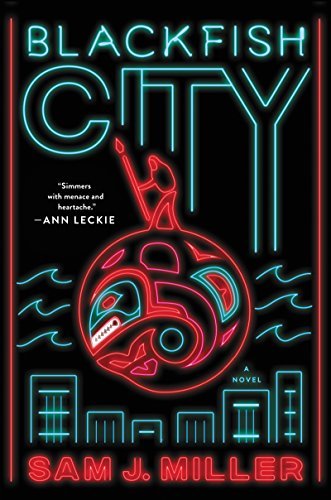
Blackfish City (2018)
by Sam J. Miller
After the climate wars, a floating city is constructed in the Arctic Circle, a remarkable feat of mechanical and social engineering, complete with geothermal heating and sustainable energy. The city’s denizens have become accustomed to a roughshod new way of living, however, the city is starting to fray along the edges—crime and corruption have set in, the contradictions of incredible wealth alongside direst poverty are spawning unrest, and a new disease called “the breaks” is ravaging the population.
When a strange new visitor arrives—a woman riding an orca, with a polar bear at her side—the city is entranced. The “orcamancer,” as she’s known, very subtly brings together four people—each living on the periphery—to stage unprecedented acts of resistance. By banding together to save their city before it crumbles under the weight of its own decay, they will learn shocking truths about themselves.
Blackfish City is a remarkably urgent—and ultimately very hopeful—novel about political corruption, organized crime, technology run amok, the consequences of climate change, gender identity, and the unifying power of human connection.
Moby Dick retelling of inter-planetary exploration to help a resource-depleted earth:
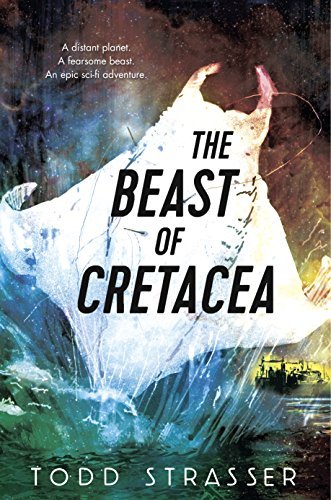
The Beast of Cretacea (2015)
by Todd Strasser
Master storyteller Todd Strasser reimagines the classic tale of Moby Dick as set in the future—and takes readers on an epic sci-fi adventure.
When seventeen-year-old Ishmael wakes up from stasis aboard the Pequod, he is amazed by how different this planet is from the dirty, dying, Shroud-covered Earth he left behind. But Ishmael isn’t on Cretacea to marvel at the fresh air, sunshine, and endless blue ocean. He’s here to work, risking his life to hunt down great ocean-dwelling beasts to harvest and send back to the resource-depleted Earth. Even though easy prey abounds, time and again the chase boat crews are ordered to ignore it in order to pursue the elusive Great Terrafin. It’s rumored that the ship’s captain, Ahab, lost his leg to the beast years ago, and that he’s now consumed by revenge. But there may be more to Captain Ahab’s obsession. Dark secrets and dangerous exploits swirl around the pursuit of the beast, and Ishmael must do his best to survive—if he can.
Lyrical present-day tale of the apocalyptic effects of climate change:

Clade (2015)
by James Bradley
On a beach in Antarctica, scientist Adam Leith marks the passage of the summer solstice. Back in Sydney his partner Ellie waits for the results of her latest round of IVF treatment.
That result, when it comes, will change both their lives and propel them into a future neither could have predicted. In a collapsing England Adam will battle to survive an apocalyptic storm. Against a backdrop of growing civil unrest at home, Ellie will discover a strange affinity with beekeeping. In the aftermath of a pandemic, a young man finds solace in building virtual recreations of the dead. And new connections will be formed from the most unlikely beginnings.
Clade is the story of one family in a radically changing world, a place of loss and wonder where the extraordinary mingles with the everyday. Haunting, lyrical and unexpectedly hopeful, it is the work of a writer in command of the major themes of our time.
Near-future tale of the apocalyptic effects of climate change:

Drowning Towers (1984)
by George Turner
Francis Conway is Swill - one of the millions in the year 2041 who must subsist on the inadequate charities of the state. Life, already difficult, is rapidly becoming impossible for Francis and others like him, as government corruption, official blindness and nature have conspired to turn Swill homes into watery tombs. And now the young boy must find a way to escape the approaching tide of disaster.
The Sea and Summer, published in the US as The Drowning Towers is George Turner’s masterful exploration of the effects of climate change in the not-too-distant future. Comparable to J.G. Ballard’s The Drowned World, it was shortlisted for the Nebula and won the Arthur C. Clarke Award for best novel in 1988.
Fantasy tale in an apocalyptic world of catastrophic climate change:
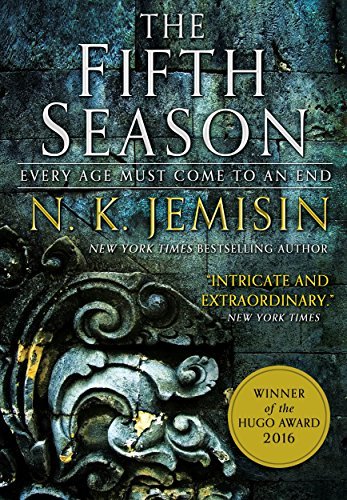
The Fifth Season (2015)
Broken Earth trilogy
by N. K. Jemisin
WINNER OF THE HUGO AWARD FOR BEST NOVEL 2016
This is the way the world ends…for the last time.
A season of endings has begun.
It starts with the great red rift across the heart of the world’s sole continent, spewing ash that blots out the sun.
It starts with death, with a murdered son and a missing daughter.
It starts with betrayal, and long dormant wounds rising up to fester.
This is the Stillness, a land long familiar with catastrophe, where the power of the earth is wielded as a weapon. And where there is no mercy.
Hard sci-fi in a post-climate change world where skyscrapers are island homes:
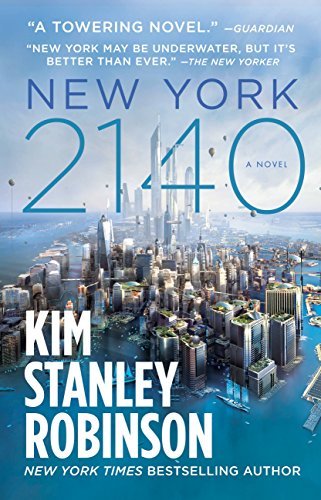
New York 2140 (2017)
by Kim Stanley Robinson
NOMINATED FOR THE HUGO AWARD FOR BEST NOVEL 2018
New York Times bestselling author Kim Stanley Robinson returns with a bold and brilliant vision of New York City in the next century.
As the sea levels rose, every street became a canal. Every skyscraper an island. For the residents of one apartment building in Madison Square, however, New York in the year 2140 is far from a drowned city.
There is the market trader, who finds opportunities where others find trouble. There is the detective, whose work will never disappear - along with the lawyers, of course.
There is the internet star, beloved by millions for her airship adventures, and the building’s manager, quietly respected for his attention to detail. Then there are two boys who don’t live there, but have no other home - and who are more important to its future than anyone might imagine.
Lastly there are the coders, temporary residents on the roof, whose disappearance triggers a sequence of events that threatens the existence of all - and even the long-hidden foundations on which the city rests.
New York 2140 is an extraordinary and unforgettable novel, from a writer uniquely qualified to tell the story of its future.
Spec-fic tale of genetic engineering gone awry, causing ecological devastation:
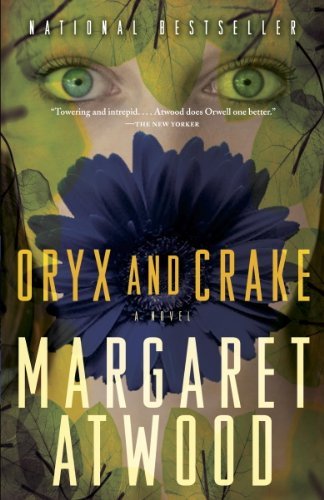
Oryx and Crake (2003)
MaddAddam trilogy
by Margaret Atwood
Oryx and Crake is at once an unforgettable love story and a compelling vision of the future. Snowman, known as Jimmy before mankind was overwhelmed by a plague, is struggling to survive in a world where he may be the last human, and mourning the loss of his best friend, Crake, and the beautiful and elusive Oryx whom they both loved. In search of answers, Snowman embarks on a journey–with the help of the green-eyed Children of Crake–through the lush wilderness that was so recently a great city, until powerful corporations took mankind on an uncontrolled genetic engineering ride. Margaret Atwood projects us into a near future that is both all too familiar and beyond our imagining.
Poignant, literary tale of inter-planetary exploration to help a devastated earth:

The Stone Gods (2007)
by Jeanette Winterson
On the airwaves, all the talk is of the new blue planet – pristine and habitable, like our own was 65 million years ago, before we took it to the edge of destruction. Off the air, Billie Crusoe and the renegade robo-sapian Spike are falling in love. Along with Captain Handsome and Pink, they’re assigned to colonize the new blue planet. But when a technical maneuver intended to make it inhabitable backfires, Billie and Spike’s flight to the future becomes a surprising return to the distant past –- “Everything is imprinted forever with what it once was.” What will happen when their story combines with the world’s story? Will they –- and we –- ever find a safe landing place?
Playful, passionate, polemical, and frequently very funny, The Stone Gods will change forever the stories we tell about the earth, about love, and about stories themselves.
The ocean fights back against mankind’s pollution in this sci-fi thriller:

The Swarm (2004)
by Frank Schatzing
Whales begin sinking ships. Toxic, eyeless crabs poison Long Island’s water supply. The North Sea shelf collapses, killing thousands in Europe. Around the world, countries are beginning to feel the effects of the ocean’s revenge as the seas and their inhabitants begin a violent revolution against mankind. At stake is the survival of the Earth’s fragile ecology—and ultimately, the survival of the human race itself.
The apocalyptic catastrophes of The Day After Tomorrow meet the watery menace of The Abyss in this gripping, scientifically realistic, and utterly imaginative thriller.
Biopunk tale of a genetically engineered future in a post-climate change world:

The Windup Girl (2009)
by Paolo Bacigalupi
Anderson Lake is a company man, AgriGen’s Calorie Man in Thailand. Under cover as a factory manager, Anderson combs Bangkok’s street markets in search of foodstuffs thought to be extinct, hoping to reap the bounty of history’s lost calories. There, he encounters Emiko…
Emiko is the Windup Girl, a strange and beautiful creature. One of the New People, Emiko is not human; instead, she is an engineered being, creche-grown and programmed to satisfy the decadent whims of a Kyoto businessman, but now abandoned to the streets of Bangkok. Regarded as soulless beings by some, devils by others, New People are slaves, soldiers, and toys of the rich in a chilling near future in which calorie companies rule the world, the oil age has passed, and the side effects of bio-engineered plagues run rampant across the globe.
What Happens when calories become currency? What happens when bio-terrorism becomes a tool for corporate profits, when said bio-terrorism’s genetic drift forces mankind to the cusp of post-human evolution? Award-winning author Paolo Bacigalupi delivers one of the most highly acclaimed science fiction novels of the twenty-first century.
4 notes
·
View notes
Text
THE DIVIDED BILLIONS: How The World Is Becoming More Separated.
Since the creation of the WWW (World Wide Web), the publicly accessible internet as we know it today created by Tim Berners-Lee in 1989 the world has come on leaps and bounds in both societal advances and technological triumphs. But what most don’t know is those who are left behind!
The term widely known as the digital divide, refers to the separation in both realistic ability and, together with access, and literacy with regards to the internet. It is a clear fact that certain countries have an advantageous position to provide their citizens with access to the WWW.
Let me explain with a brief history for example, Berners-Lee was a British scientist and so his early creation of the “WWW” consisted of English based language. Hence why parts of Northern America very quickly adopted the technology and why it has led them to become one of the most internet reliant continents in the world. The USA (United States of America) being the main contributor to this lifestyle. Many of their countries basic building blocks of society are run using the internet and the WWW. For example, homes are powered, heated and provided with water, through not just pipes and wires; but through communication between employees, customers, managers and executives.
Many parts of the world who don’t have a large or fluent population of English speaking citizens, tend to show a trend of failure to adopt the web to the extent that others have in the 21st century. This could also be due to the political climate since the ending of the Second World War and the Cold War. Countries lesser involved with global politics, trading or combat appear to be left very much in the dust in terms of digital status in the world.
An interesting anomaly to this theory of course is displayed in the rate at which South-Eastern (SE) Asian countries are excelling in both digital usage, literacy and efficiency. The web and the connections that come with it are becoming more prominent in certain countries in those regions every day. An example of this would be how in a 2010 report made by Akamai, the world's largest CDN (Content Delivery Network, systems of servers that deliver web content to specific users) provider; showed how there was a 16.22 Mbit/s average difference between South Korea’s super-fast internet speeds and Iran’s bottom line technology.

Iran of course has been shrouded from the world/technology in the last decade, preoccupied with fighting and violence that has made setting up a decent living environment for its civilians a secondary priority. Interestingly all three top spots on this report are taken by SE Asian countries who are renowned for their dramatic increase in use for the new age technologies. So, what advantages come to those countries who have such a dramatic presence in the online world in today's age?
In a blog post by Google’s vice president for South East Asia & India and the Joint Head Investment Group at Temasek (a multinational investment organisation), they explained how the South East has rapidly increased its e-commerce value far greater than projected.
Additionally, in a study in February of 2017, by “WeAreSocial” they conclude that in the last 12 months, the web user base in SE Asia grew by 80 million people, that's more than a 30% increase in around a year.

They extended this point by saying that the rise is likely driven by an increase in mobile internet users, as handheld hardware technology increases in quality; customers are warming to the idea of connectivity and are seeing more benefits of living an online and interconnected lifestyle.
A really important part of online culture in many of the countries in SE Asia is online gaming. In South Korea, Japan and Hong Kong esports is a rising environment for both children and young adults. This adoption of the web shows how whole new platforms, businesses and parts of society can come into fruition under the right circumstances.
In other parts of the world, countries who have yet to begin making leaps and bounds into the world of modern online tech have clearly fallen behind in aspects such as these. In an article from “Motherboard” they interviewed a young esports star called “All Youssef Mohsen” who addressed the fact that despite his team's success in their region of India, the lack of game servers set up to accommodate their competitions with teams from other countries had effectively barred them from the global scene. This means that it wasn’t his team's failure to produce results that resulted in their stumped ambitions, but instead the inability of his country to provide quality network facilities.
This issue raises the point that “true” access to the internet is never a simple yes/no answer. Access to the internet should not be judged by the content that is available. For example, if users back in 2000 were trying to access the web there would be reasonable loading times, because there was less content and images being displayed online. If you tried to access say, “YouTube” today with the same speed connection the difference in loading time would be very obvious. Essentially, it is an imperative and crucial aspect of remaining within the “digital societal loop” that the quality of digital related facilities are invested into and kept up to date with the rapidly changing and advancing climate of today's world.
This being said, what are the disadvantages to not being within the “digital societal loop”?
Looking at countries that are members of the “lower half” of the digital divide, you can see political, social and geographical trends that may explain why these countries are less developed in terms of digital practices. An interactive map produced by “Fast metrics” displays countries average internet speeds. Green being high and red being low. Countries with lower speeds and presumably less advanced digital facilitation are often seen clumped together such as in the South Americas, Africa an Eastern Asia.
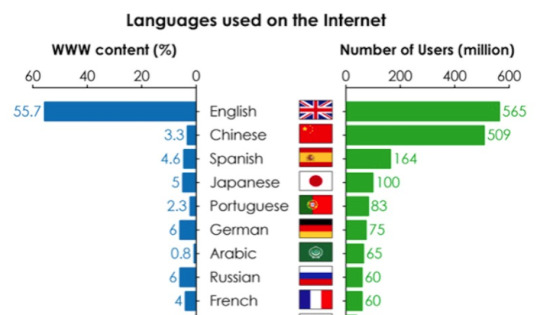
There are a few small number of anomalies to the geographical trend such as Greenland who is close of the coast of Canada (a North-American country with good internet access) and yet has dramatically different results. This is likely due to their very small land mass to population ratio. The population density in Greenland is 0.137 people per square meter as of 2016 according to “Index Mundi” resulting in a low input of infrastructure due to lack of population. To run cables and create a viable network across such a large portion of land to such a small potential customer base is not financially viable for many companies. Other anomalies on the other side of the planet include South Korea and Japan; two internet savvy countries surrounded by many other nations that appear much less advance in terms of technological infrastructure.. These nations fall under the small collection of countries that have thrived by themselves in providing its people with an unmatched source of access to technology.
Hector Ruiz, the former President of Motorola’s semiconductor products sector, and former president and CEO for AMD (Advanced Micro Devices) stated that “Technology is only as powerful as it is accessible. Broader access brings education, information, and a sense of community that can help combat AIDS, malnutrition, ignorance and neglect. The power of a connected and enlightened world community is just beginning” this describes how many countries who have a more organised system in place for internet use, communication, and advanced industries are often those who not only do help, but should aim to help those who don’t and who are suffering. This today is aided by having the fastest system the world has ever seen to send and receive money through online transactions.
As children are born into this era of new methods and ways of learning it is entirely possible for people from all walks of life to have access to an education, even if it different to that of the normal teaching process. With easy access to education comes more educated people. Democratic voting turnouts are suspected to increase as a result of individuals becoming more understanding of the world and politics. The perception of money from physical to digital has it’s issues but the education of finance can help form more stable economies and teach people who can eventually give back through ideas and breakthrough learning that can help the world directly. It has been shown through global trends and statistics that after countries invest time, money and resources into providing its citizens with digital facilities, that more advanced and efficient forms of education (such as online tutoring) will rise in popularity and accessibility. With this comes the chance to educate children with areas such as English speaking which as mentioned, helps increase the chance that individuals can communicate with a much broader range of people, especially in the online world where 55.7% of the internet's content is published in English (from a study by unbabel.com).
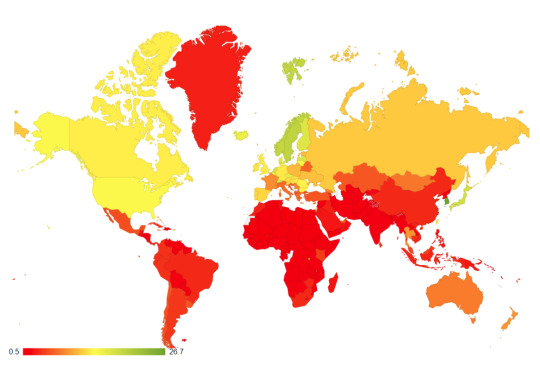
In conclusion, the difference between first and third world countries across the globe has always been large, however with the rapid incline of digital access being provided to certain countries compared to the stagnant nature of it in others the gap between countries economies, infrastructures, industries, and societies is growing day by day. And who knows when or if it will stop?#
References
Anandan, R. and Sipahimalani, R. (2019). Southeast Asia’s accelerating internet economy. [online] Google. Available at: https://www.blog.google/around-the-globe/google-asia/economysea-2018/ [Accessed 21 Jan. 2019].
Fastmetrics.com. (2019). Internet Speeds by Country - Fastest Internet In The World Map. [online] Available at: https://www.fastmetrics.com/internet-connection-speed-by-country.php [Accessed 21 Jan. 2019].
Indexmundi.com. (2019). Greenland - Population density (people per sq. km of land area). [online] Available at: https://www.indexmundi.com/facts/greenland/indicator/EN.POP.DNST [Accessed 21 Jan. 2019].
Kemp, S. (2019). Digital in Southeast Asia in 2017 - We Are Social. [online] We Are Social. Available at: https://wearesocial.com/special-reports/digital-southeast-asia-2017 [Accessed 21 Jan. 2019].
Kleinman, J. (2019). African Esports Are Ready to Explode, but Video Game Publishers Are Holding Them Back. [online] Motherboard.vice.com. Available at: https://motherboard.vice.com/en_us/article/5994g8/african-esports-are-ready-to-explode-but-video-game-publishers-are-holding-them-back [Accessed 21 Jan. 2019].
Pingdom Royal. (2019). The REAL connection speeds for Internet users across the world (charts) - Pingdom Royal. [online] Available at: https://royal.pingdom.com/2010/11/12/real-connection-speeds-for-internet-users-across-the-world/ [Accessed 21 Jan. 2019].
Unbabel. (2019). Top Languages of the Internet, Today and Tomorrow. [online] Available at: https://unbabel.com/blog/top-languages-of-the-internet/ [Accessed 21 Jan. 2019].
0 notes